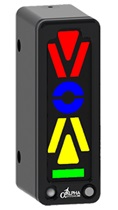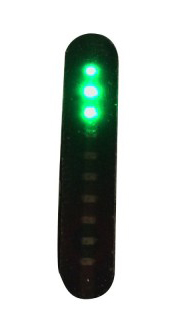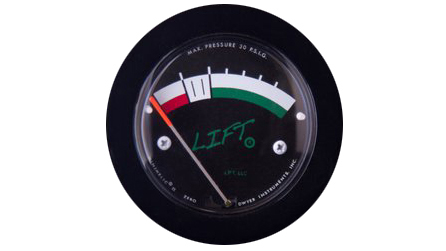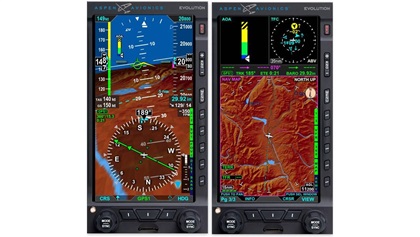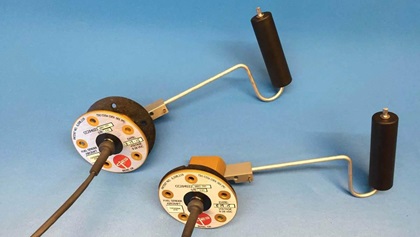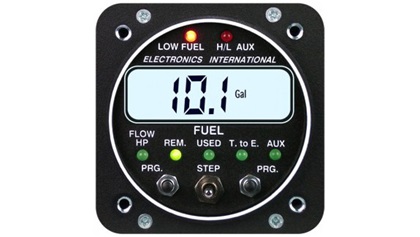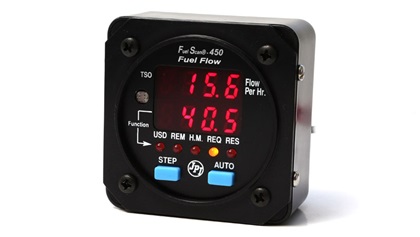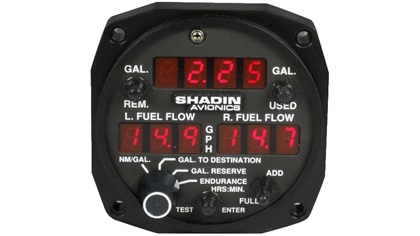Safety logic
Adding safety equipment to address accident causes

Let’s lead with the head. What would happen if you made buying decisions based solely on what brought the biggest safety benefits? We took the latest edition of the AOPA Air Safety Institute’s Joseph T. Nall Report, which analyzed 2015 accident data, and compared major accident causes to the equipment that would help to mitigate those accidents.
There are ground rules. Right away we’re going to take away integrated avionics systems. Although there is a great safety benefit to a new Garmin G5 or Aspen EFD1000, it’s impossible to quantify how much of that benefit is safety, and how much is the utility or enjoyment of a pretty, colorful screen. And their potential benefits are simply too broad to attach to one accident category. We also acknowledge that some accident types could be avoided by multiple types of equipment. Loss of control is a great example. An autopilot may have helped prevent many accidents. To address this we focused on the piece of equipment that would have made the biggest difference across the full range of accidents. Because loss of control is a bucket that contains takeoff, landing, maneuvering, the traffic pattern, and other scenarios, angle of attack has the broadest impact. Finally, beyond the products listed here, products in categories such as post-crash survivability save lives. And in the case of equipment such as a whole-airframe parachute, we know exactly how effective they are. Despite that, we decided to focus only on finite accident categories.
Thinking of safety in these specific terms can help save lives. Do you remember controlled flight into terrain, or CFIT? Products such as terrain awareness and warning systems and moving map GPS have greatly reduced the CFIT risk. Maybe the products on this list can help do the same for their respective accident categories.
Angle of attack indicator
Of the 714 accidents in 2015 chalked up to pilot error, reasonably 522 can be attributed to pitch, power, and airspeed. Angle of attack indicators are relatively inexpensive and when used properly directly target common accident scenarios, such as departure stalls, traffic pattern stalls, maneuvering problems, airspeed control, and more. Although AOA indicators wouldn’t have prevented all 522 of these accidents, there’s little doubt they greatly enhance cockpit safety, especially in critical environments.
AOA indicators for smaller aircraft come in a few different types. The first on the market were lift reserve indicators. Although these look and act largely like AOA indicators and many use the terms interchangeably, lift reserve indicators derive available lift by measuring the pressure differential from a wing-mounted probe. Direct AOA is just that—a vane that pivots with the angle of attack and sends that information to a display. Normalized AOA is a type of direct AOA that adopts a scale where 1 is the stall and 0 is no lift or zero AOA. Some manufacturers that use these displays give the readout in numbers, while others use a light display. Although a manufacturer that makes direct AOA will tell you that’s the best approach, there doesn’t seem to be much agreement that one form is better than another.
Starting a few years ago, the FAA made AOA indicators much easier to certify, which brought a few new choices to the market and lowered prices. FAA policy also makes AOA easy to install. In most cases, a logbook entry from a mechanic is all that’s needed for these minor alterations. Despite this, AOA adoption hasn’t been high. Icon is all in with AOA in its A5, and military pilots have used it for decades. Maybe it’s time the GA community followed suit. Here are six options:
“Thinking about night flying my two musts are a dual-color pilot’s headlamp and a basic handheld transceiver to activate pilot-controlled runway lights in case I have an electrical failure.” —Kollin Stagnito*Alpha Systems Eagle, Falcon, Merlin, and Raven
All of Alpha Systems’ many AOA units are lift reserve indicators to be installed on the glareshield. The different models differ primarily in display type, which gives customers great options in terms of being able to choose horizontal, vertical, and even head-up displays. Of all the options, the Raven HUD is the most intriguing, giving the pilot an AOA that is viewable toward the lower part of the windscreen, allowing for maximum time with eyes outside the cockpit. Buyers have the choice of a chevron display or simple bar display. Alpha Systems’ AOAs are also approved for pressurized and Transport category aircraft
Price: From $1,975 to $4,725, depending on options.
Contact: alphasystemsaoa.com
Bendix/King KLR 10
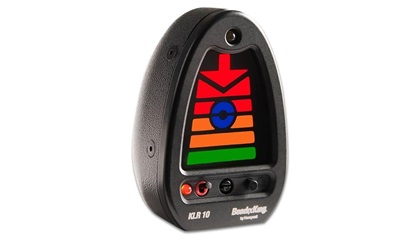
Bendix/King was one of the first to market with AOA when the FAA began encouraging installation in light GA aircraft, and the compact design of the KLR 10 is still a great option. The KLR 10 is a lift reserve indicator, with a distinct red arrow at the top showing high angles of attack and green bars at the bottom showing low angles of attack. A prominent blue donut in the middle shows the optimum approach angle. The system gives aural alerts, and a heated probe is available.
Price: Starts at $1,600
Contact: bendixking.com
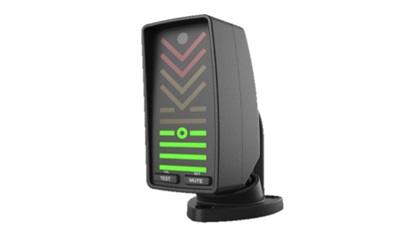 Garmin GI-260
Garmin GI-260
Garmin’s standalone AOA offering, the GI-260, presents normalized AOA on a vertical LED scale. Red chevrons at the top of the display show angles closer to the stall, while green bars at the bottom show lower angles of attack. A green donut inlaid on a green bar displays the optimal approach angle. The GI-260 requires a small amount of power, can provide various aural alerts, and is meant to be mounted on the windscreen. G3X Touch users can also option the AOA on the integrated display.
Price: $249.99 for the display; $1,499 for a kit including an unheated probe and the display; $1,649 for a display and heated probe
Contact: garmin.com
“I always have my cellphone with me and running ForeFlight as a backup. I also have a do-it-yourself survival bag. It has water, a first-aid kit, space blanket, some Power-bars that are probably old enough to vote now, and some other miscellaneous stuff.”—Jill W. Tallman*
General Technics CYA-100 Angle of Attack system
Winner in the AOA category for best name, the CYA-100 displays AOA on a thin light strip that can be installed in almost any panel. AOA is directly measured with a vane in the same way you’d see it on a jet, although notably the CYA vane isn’t heated. The thin display allows for a lot of flexibility in panel placement, but provides limited information. Green LEDs at the top show a low angle of attack while red LEDs at the bottom show a high angle of attack—a configuration directly opposite what many others on the market do.
Price: $625
Contact: ackemma.com/index
Lift AOA monitor
The Lift AOA monitor is one of the simplest designs on the market, which for some makes it a strong choice. Because it doesn’t require power, the Lift AOA monitor will work independently of the panel in the case of an electrical failure. Although the name may lead you to believe otherwise, the Lift AOA monitor is a lift reserve indicator. The 2.25-inch round display can be installed in the panel or on the glareshield. The calibrated display shows everything from back side of the power curve to optimal approach speed and lift/drag max. Plus, the price is right.
Price: $389
Contact: lift-mgt.com
“I like having ADS-B traffic, whether it’s on the cockpit display or the iPad. On the low-tech side, I always keep a multitool in my bag.” —Sarah Deener*Aspen Avionics integrated display upgrade
Owners of Aspen Avionics glass panel displays can add integrated AOA with only a software upgrade. Aspen’s system is unique in that all the data necessary to present AOA is derived electronically through the attitude heading reference system. Gathering weight, airspeed, acceleration, and pitch, the computer calculates an AOA that reviewers say is very accurate. There’s no need to add hardware or make airframe changes.
Price: $1,995
Contact: aspenavionics.com
Fuel system upgrades
Pilots are generally responsible people. They prepare, they plan, they anticipate problems. Which makes it all the more baffling that fuel mismanagement still accounts for around 10 percent of pilot-error accidents. In 2015, 76 general aviation aircraft crashed from fuel mismanagement: 46 from flight planning problems, 20 from system operation issues, and 10 from fuel contamination.
You could argue that because aircraft fuel gauges are so terrible we’ve all stopped trusting them, and for good cause. A variety of fuel-system-related products on the market are meant to address this issue. Some, such as fuel totalizers, have been out for years and can give great confidence to fuel planning and usage with information beyond the standard fuel gauges. Others, such as digital fuel senders, are relatively new, and aim to restore our confidence in the gauges.
Most fuel totalizers will show a range of parameters. Current fuel burn comes from a transducer, while measurements such as fuel to next waypoint and amount required to the destination will require a serial input from a GPS unit.
New fuel displays or senders will generally require a supplemental type certificate to install, which can increase the cost. Given the increase in safety it may be an easy cost to justify.
CiES fuel senders
The folks at CiES want us to be able to trust our fuel gauges again. What a concept! The company has created a series of new analog and digital fuel senders that are available as OEM and aftermarket equipment on a wide range of common general aviation aircraft. Using some high-tech magnetic wizardry, the CiES senders measure fuel accurately to within a tenth of a gallon without electronics in the tank. In many cases the price could be close to the cost of overhauling old senders, or buying an old design from the factory, making the investment in something much more accurate seem much more reasonable.
Price: $790 to $3,160 depending on the aircraft.
Contact: ciescorp.com
“I keep it simple with a signal mirror and modern with a satphone.” —Tom Horne*Electronics International FP-5
Electronics International’s FP-5 has a slightly different display from others on the market. A single line shows current fuel flow or a range of different parameters, including fuel flow, fuel weight, time to empty, fuel used, and more. The display also has caution and warning lights for low fuel and high or low fuel pressure. Be careful when ordering to make sure you choose the FP-5 or FP-5L, which includes a serial connection to the GPS or multifunction display.
Price: $499 to $1,049 depending on horsepower and options.
Contact: buy-ei.com
JP Instruments Fuel Scan 450
With displays for current fuel burn, total used, total required, hours and minutes of fuel left, how much fuel in reserve, and gallons per nautical mile, what else could you possibly want? The JP Instruments Fuel Scan 450 provides all these parameters on a digital display that fits in a 2.25-inch instrument hole. Current fuel burn is always displayed on top, while the rest of the information is selectable on the bottom line. The kit includes the instrument, a transducer, the harness, and everything else required for installation.
Price: $650 to $1,200 depending on options.
Contact: jpinstruments.com
“A handheld transceiver with an external antenna connection and a 406 MHz ELT with GPS connection are musts for me.” —Tom Haines*Shadin Miniflo-L, Digiflo-L, and Microflo-L
Shadin has long been in the fuel totalizer business, and the company offers three models, each with slightly different features and displays. The Miniflo-L is a 3.25 by 1.25-inch rectangular display that shows current burn in gallons per hour, and then a range of selectable parameters that are selected with a rotating knob. The Digiflo-L fits in a standard round instrument hole and provides much the same information as the Miniflo-L. The Microflo-L provides the same information as the Miniflo-L, but in a standard 2.25-inch small round instrument. When connected to a GPS all three units can display specific range, which is fuel burn divided by groundspeed. They also can send information to various King and Garmin GPS units.
Price: $1,500 (Microflo), $2,000 (Miniflo and Digiflo), not including transducers.
Contact: shadin.com
“Vortex generators reduce stall speed, which is the next best thing to a parachute. Synthetic vision can show obstacles as well as the nature of terrain—or water—beneath you.” —Dave Hirschman* Weather in the cockpit
Not to be macabre, but weather continues to bend airplanes and kill pilots. Although weather-related accidents accounted for only about 5 percent of all pilot-error accidents in 2015, they tallied up nearly 20 percent of fatal pilot-error accidents. The obvious conclusion is that although your chance of having a weather-related accident is somewhat low, if you do fly VFR into IMC, meet a thunderstorm, or botch an approach, you have a greater chance of dying from that mistake.
One could make a strong argument that the best investment to nullify weather accidents is a new brain or a new personality. That’s because most are caused by poor decision making. Great information is useless in the hands of someone who chooses to ignore it.
But better information would help to prevent some of these accidents. Pilots have two key choices when deciding on how to get weather in the cockpit. We’ll ignore on-board radar because of its limited scope and almost exclusive original equipment manufacturer installation. Owner or renter, you can choose from either satellite weather datalink provided by SiriusXM or ADS-B flight information service-broadcast (FIS-B). Each service has pros and cons, and offers different features. Both can be depicted on a panel-mounted display or a tablet or portable GPS.
SiriusXM
Datalink weather from SiriusXM is offered as a subscription service. Through proprietary hardware the information can be displayed on a broad range of GPS navigators, multifunction displays, portable GPS units, and more recently, on a tablet. For those flying with a tablet, a drawback of SiriusXM is that there are few hardware options, and the buy-in cost is more than some comparable ADS-B receivers.
Look at FIS-B and SiriusXM side by side, however, and it’s clear that SiriusXM offers a better product. As soon as you receive the broadcast you have nationwide high-resolution radar, METARs, TAFs, and everything else the service offers. There are lots of other benefits as well. Cloud-top reports are observed, whereas ADS-B only provides forecast information. Lightning is both cloud-to-ground and cloud-to-cloud, while ADS-B is only cloud-to-ground.
The biggest drawback is cost, which can add up over time. But if money isn’t a factor, or you are looking for premium options, SiriusXM is the choice.
Price: $29.99 to $99.99 per month, depending on weather products selected. Free trials and special offers are available to AOPA members at aopa.org/siriusxm.
Contact: siriusxm.com/sxmaviation
ADS-B FIS-B
Many people will say that ADS-B weather is free, which is only partially true. It is subscription-free; hardware is still required to receive the information. Like SiriusXM, ADS-B weather can be displayed on a variety of panel-mounted and portable displays. Probably the biggest benefit to ADS-B is the low cost of entry for a portable receiver that can connect with a tablet, making in-flight weather available and accessible for everyone in every aircraft.
ADS-B weather comes through a series of ground stations installed around the country. This means the receiver needs to see the stations in order to receive the information. If you have a ground station at your airport, you’ll probably get ADS-B weather on the ground. If you live in the mountains it might mean climbing a few thousand feet before you receive it.
A big complaint about ADS-B weather is the radar display. Within 250 nautical miles the receiver will get a decent picture of the weather in a workable resolution. To save bandwidth the radar beyond that will look like a game of Minecraft. It’s virtually unusable. In a Piper Cub that’s not a problem. In a speedy Daher TBM, it’s important.
One important side note to ADS-B weather: Buying a receiver and getting the subscription-free weather and traffic does not meet the 2020 ADS-B mandate. For that your aircraft will need ADS-B Out equipment.
Price: Subscription-free; hardware varies.
Contact: aircraftspruce.com for a range of hardware choices.
Email [email protected]
*These products address three of the major general aviation accident causes, but safety encompasses much more than positive aircraft control, fuel management, and weather awareness. We asked the editors for their recommendations for their favorite safety equipment.
